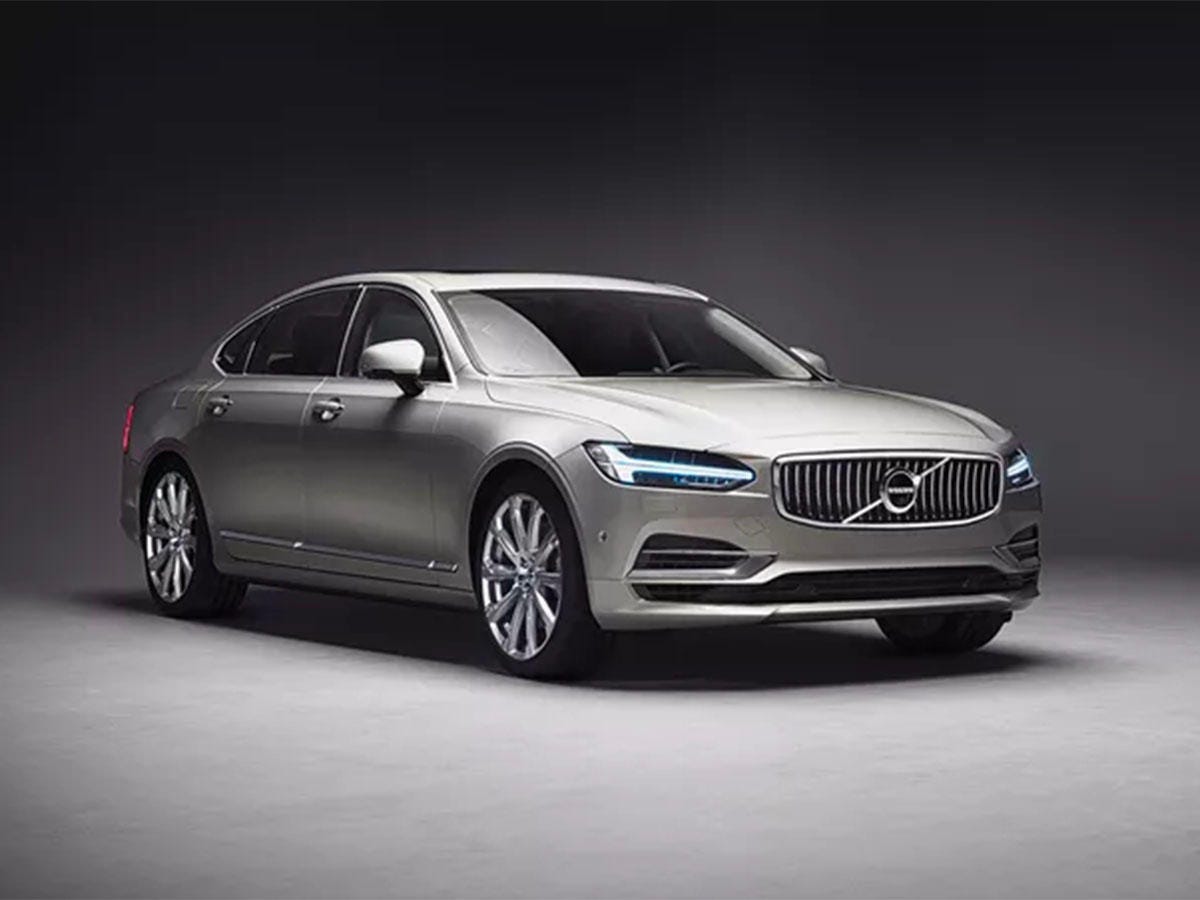Incredibly cool Volvo concept cars
Can a brand that's all about safety still get buck wild in the concept space? Ja!

S90 Ambience: The most ambitious Volvo concept?
Volvo's ambitious concept car, the recently revealed S90 Ambience, is a three-seat sedan designed to chauffeur high-powered executives, particularly in China. It may look ordinary, but on the inside...
S90 Ambience: VIPs only
The S90 Ambience does without a passenger-side front seat to give VIPs as much legroom as possible.
S90 Ambience: Choose your own smell
The Volvo S90 Ambience is also a multisensory experience with seven preset "themes" that mix visuals, sounds and one of four bespoke scents to match whatever mood you're in.
S60 Concept: Viking-inspired
The Volvo S60 Concept, unveiled at the Detroit Auto Show in 2009, drew its inspiration from the Swedish coastline.
It was equipped with 20-inch wheels, a gigantic glass roof and LED headlamps that created the image of two miniature Viking longboats.
S60 Concept: Crystal center stack
One standout feature was its floating center console made of hand-crafted Orrefors crystal. It almost looked as if a waterfall was cascading from the instrument panel.
S60 Concept: Three-dimensional glass speedometer
The rest of the S60 Concept's interior was impressive, as well. Its speedometer was designed as a three-dimensional glass spiral. The low numbers appeared closest to the eye and the figures seemed to become increasingly distant upon acceleration.
Volvo YCC: For women, by women
First conceived in 2001, the Volvo Your Concept Car (YCC) was designed by an all-female team. It combined precision performance with gullwing doors (for easier entry), personalized seat positioning and low-maintenance paint, among other features.
Volvo YCC: A look inside
There were eight interchangeable seat pad designs, each with matching carpeting.
The car was designed with extra storage in mind, too; its center console was large enough to stow a laptop computer.
Volvo SCC: A car built around optimal vision
Introduced in 2001 at the Detroit Auto Show, the Volvo Safety Concept Car (SCC) was the predecessor to the production Volvo C30. It had cameras and sensors to offset blind spots, along with seats that automatically adjusted to optimize a driver's line of sight.
Volvo SCC: One of the most transparent designs yet
The Volvo SCC boasted see-through A-pillars, which further enhanced visibility. Volvo also experimented with a new type of four-point safety belt in the SCC that better distributed the force of impact during a crash.
VESC: The safest concept ever built?
Unveiled at the 1972 Geneva Motor Show, the Volvo Experimental Safety Car introduced a number of then-innovative protective designs. It featured airbags, antilock brakes, an integrated roll cage and a disappearing steering wheel that pulled forward and away from the driver in a crash.
VESC: Super-bumpers
The VESC was easily identified by its protruding bumpers, mounted on telescoping shock absorbers.
Concept Estate: Volvo's study in comfort
Revealed at the 2014 Geneva Motor Show, the luxurious Concept Estate prioritized comfort. It was like a nod to the Swedish living room, noted Volvo.
Concept Estate: A look at the artsy interior
CNET called the Volvo Concept Estate perhaps the most jaw-dropping car at the 2014 Geneva Motor Show. A quick look inside shows why.
Volvo Bilo: The first Volvo concept car
The Venus Bilo, unveiled in 1933, was built by an independent company contracted by Volvo. It was meant to test the public's appetite for a more streamlined vehicle.
Volvo ECC: The environmentally friendly car of the future... from the past
Imagining what environmentally friendly cars from the year 2000 might look like, the 1992 Volvo ECC was a lightweight gas-electric hybrid with low environmental impact and high recyclability.
Volvo ECC: The 1992 interior with a future-forward feature
Though much of the interior of this early '90s car looks dated, one feature was years ahead of its time: the Dynaguide system. The built-in mapping display offered real-time traffic information, sourced from Sweden's network of intelligent highway sensors.
The 1952 Volvo Philip
The 1952 Volvo Philip was a hand-built concept intended to appeal to drivers in the United States. The four-door sedan featured whitewall tires, a 120-hp V8 engine and tail fins.
Volvo Concept Car: An elegant new look for the 1980s
Designed with an emphasis on safety, fuel efficiency and the environment, the 1980 Volvo Concept Car was the inspiration for the company's luxurious 760 line. The boxy concept featured a unique constant-track rear suspension and a turbodiesel engine.
Volvo LCP2000: One of the lightest cars ever built
Built with the intent of reducing fuel consumption, the 1983 Volvo Light Component Prototype 2000 (LCP2000) weighed less than 1,500 pounds. It had a top speed of 110 mph, and achieved 56 mpg (city) and 81 mph (highway).
Volvo VCC: A high-efficiency luxury car
The Volvo Versatility Concept Car (VCC), first presented at the Geneva Motor Show in 2003, was a marriage of luxury and fuel efficiency. Its six-cylinder turbocharged engine produced 250 horsepower while clocking 36.2 mpg.
Volvo VCC: A look inside
The center console was made of anodized aluminum, but it doesn't touch the dashboard. This gave the vehicle a feeling of lightness. Another interesting feature was that the car lacked conventional air vents; they were hidden and silent.
Volvo ACC: Predecessor to the XC90
Volvo's spacious Adventure Concept Car, revealed in 2001 at the Detroit Auto Show, was a sneak peak at Volvo's future SUV, the XC90.
Volvo ACC: A SUV with a built-in fridge
The luxurious interior of the ACC included a television and a refrigerator.
Volvo Concept 40.1: A new, smaller SUV
The Volvo Concept 40.1, unveiled in 2016, represents Volvo's vision for a smaller SUV it hopes will appeal to urban millennials.
Volvo Concept 40.2: A more versatile hatchback
Like the Concept 40.1, Volvo's Concept 40.2 uses the company's new Compact Modular Architecture platform. This allows the five-door hatchback to support a three-cylinder turbocharged engine or a plug-in hybrid variant.

